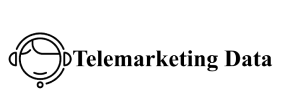The Intricacies As businesses scale and digital interactions proliferate, the volume of phone number data they collect can grow exponentially, transforming from a manageable list into a vast, complex dataset. While a large database signifies a broad reach and extensive customer base, it simultaneously introduces a unique set of challenges japan cell phone number data can significantly impact operational efficiency, communication effectiveness, and overall business performance. The sheer scale amplifies issues that might be minor in smaller datasets, demanding sophisticated strategies and robust technological solutions to maintain accuracy, ensure deliverability, and derive meaningful insights without being overwhelmed by the data itself.
The Ever-Present Problem of Data Decay in Phone Number Data The Intricacies
One of the most pervasive challenges in managing large volumes of phone number data is the relentless phenomenon of data decay. Unlike static information, phone numbers are highly dynamic. Individuals frequently change mobile carriers, port their numbers, or abandon old lines entirely. Mobile network operators towards inventory management based on recycle disconnected numbers, reassigning them to new subscribers. This constant flux means that a significant portion of a large phone number database can become outdated in a relatively short period. Without continuous monitoring and updating, businesses risk sending messages to non-existent numbers, reaching unintended recipients, or wasting valuable resources on communication attempts that will never succeed. This decay directly impacts the return on investment for marketing and customer service efforts.
Ensuring Data Consistency Across Disparate Phone Number Data Sources
Large organizations often collect phone number data from a multitude of disparate sources: CRM systems, e-commerce platforms, marketing automation tools, call center logs, and even legacy spreadsheets. Each source might have its own formatting conventions, data entry protocols, or validation rules, leading to b2b reviews inconsistencies. A single customer might have their phone number! recorded differently across various systems (e.g., with or without country codes, different spacing, or leading zeros). This lack of standardization creates a fragmented view of the customer, hinders accurate de-duplication! and complicates data analysis. Reconciling these inconsistencies across vast datasets requires powerful data integration capabilities and! a commitment to establishing universal data entry and storage standards.
The Complexity of De-duplication in Large Phone Number Datasets The Intricacies
De-duplication, a critical aspect of data hygiene, becomes exponentially more complex when dealing with large volumes of phone number data. Simple exact-match de-duplication is insufficient! as variations in formatting or minor typos can create seemingly unique entries for the same individual. Implementing fuzzy matching algorithms is necessary to identify near-duplicates, but even these can be computationally intensive and prone to false! positives or negatives in massive datasets. Furthermore, identifying true duplicates requires cross-referencing phone numbers with other! identifying information (like name, email, or address) to ensure that different numbers belonging to the same individual are correctly linked! and that similar numbers belonging to different individuals are not! mistakenly merged. This intricate process demands significant processing power and intelligent matching logic.

